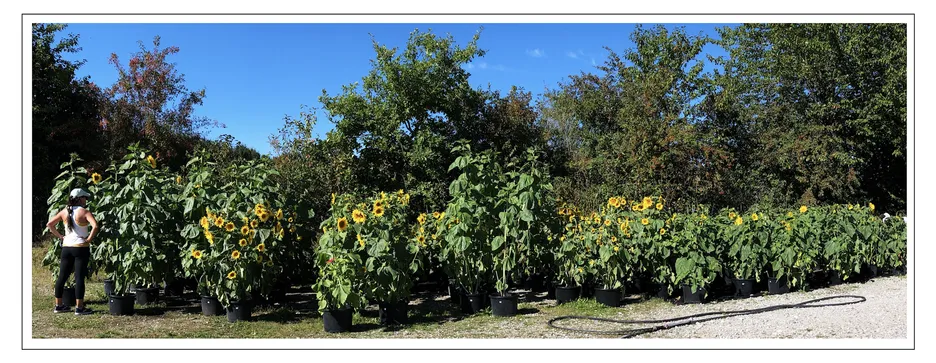Improving sunflower traits
The sunflower Helianthus annuus is the second most important oilseed crop in Europe. Sunflower oil is obtained by cold pressing from the achenes, nuts formed in the center of the large composite flower and known as sunflower seeds. It is rich in the polyunsaturated fatty acid linoleic acid (C18: 2) and is very popular as an edible oil. In addition, it also has potential for use in the chemical-technical industry as a replacement for petroleum-based products.
For applications in the technical field, but also for high-quality edible oils, a high content of the monounsaturated fatty acid oleic acid (C18: 1) is desired since high oleic acid (HO) oils with contents of >85% have high oxidation and heat stability. With an oleic acid content of <50%, sunflower oil does not have an ideal composition, and one goal of sunflower breeding is to create new varieties rich in oleic acid.
We use molecular biology methods to accelerate classical plant breeding work and create new varieties rich in oleic acid. In addition, we research ways to increase the resistance of sunflowers to fungal diseases, focusing on the pathogen Sclerotinia sclerotiorum, which causes great damage to sunflowers and a large variety of other important crops. To this end, we develop laboratory-based screening methods and test the relevance of semi-dwarfism, caused by a lack of activity of brassinosteroids or gibberellins, for resistance against Sclerotinia and other relevant traits.
